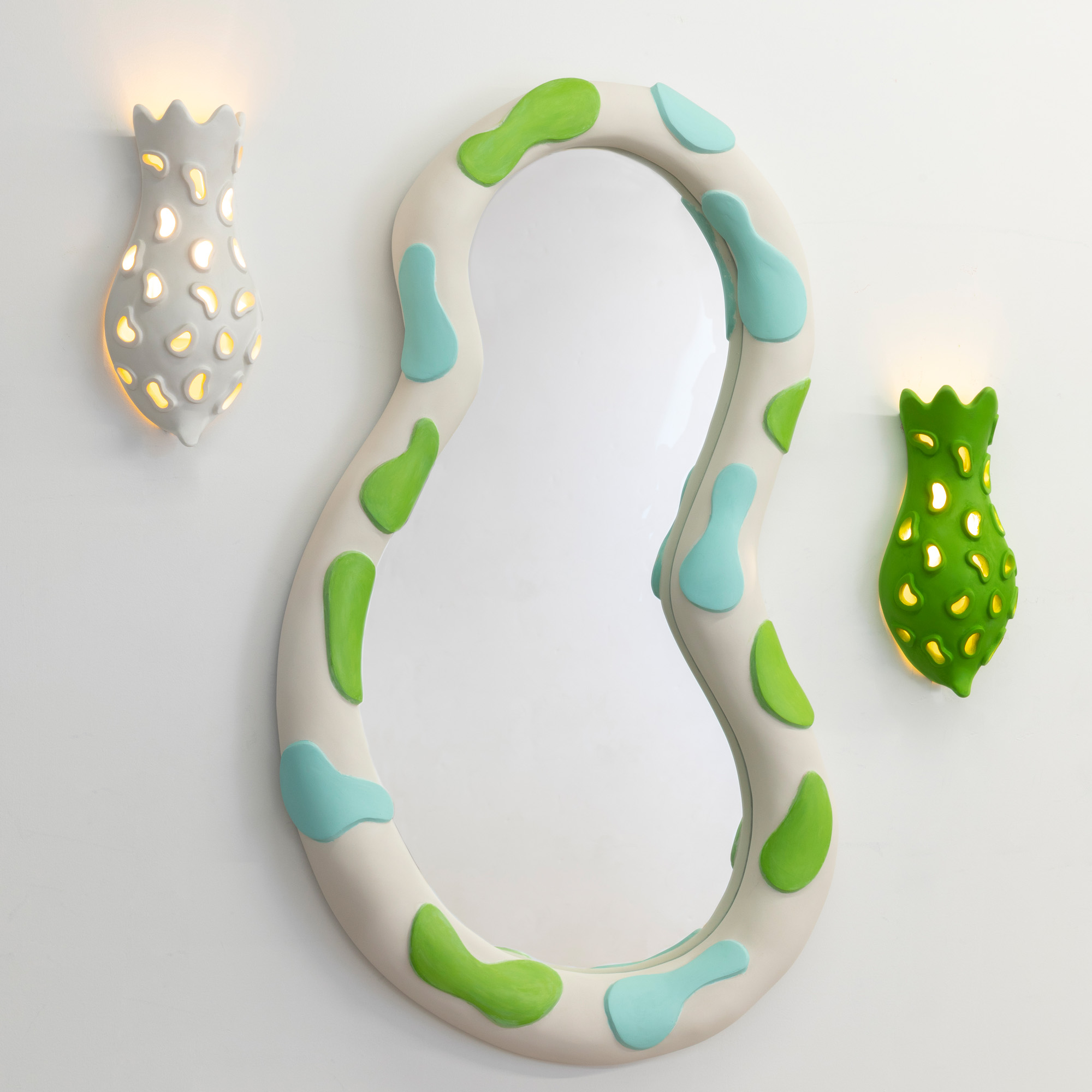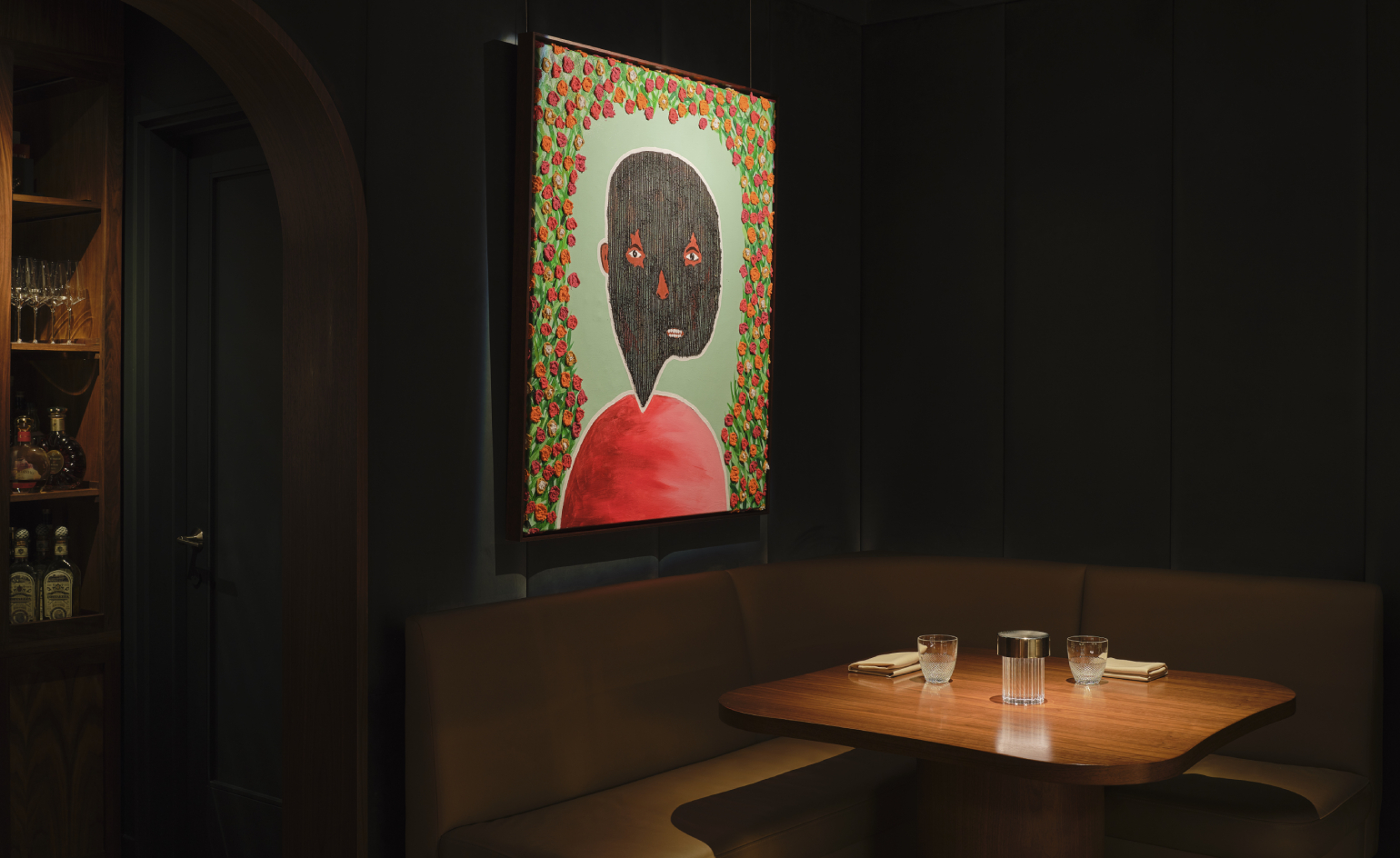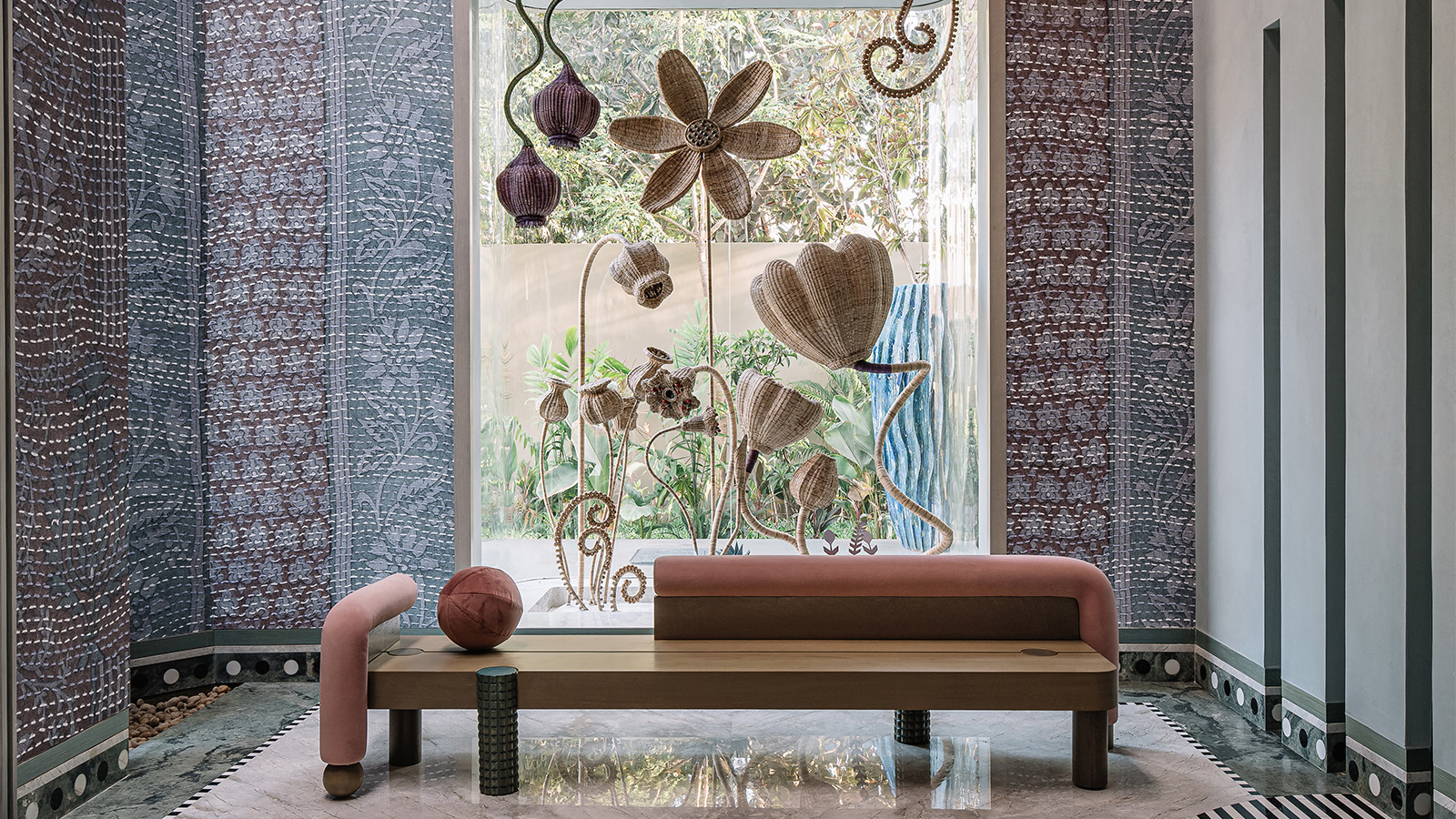Plaster master: Elizabeth Garouste creates a new free-flowing collection for Ralph Pucci
Ralph Pucci presents a new body of work by veteran designer Elizabeth Garouste, featuring mirrors and sconces made of plaster in Ralph Pucci's Manhattan sculpture studio

Well before collectible design was established as a genre, there was Ralph Pucci. The New York gallerist, who has been an active force in the city’s creative scene since the 1970s, operates his eponymous furniture and lighting gallery from an unbelievable penthouse loft in the heart of Manhattan’s Flatiron district. It is filled with an array of statement-making pieces from designers as far-reaching as Hervé van der Straeten, India Mahdavi, Vladimir Kagan and Jens Risom, as well as a growing collection of collaborative pieces made at its in-house sculpture studio and furniture workshop. A visit to the unprecedented space, its home since 1992, underscores just how unique the Ralph Pucci enterprise is.
Elizabeth Garouste for Ralph Pucci: 'a combination of imagination and functionality’

Garouste at work on a clay model of her ‘Herman’ mirror at the Ralph Pucci sculpture studio in Manhattan’s Flatiron district
Although many of the designers in Pucci’s repertoire are well-established, the energetic gallerist has long upheld a distinctive point of view, which is evident from the gestural furniture and lighting pieces that fill the gallery’s two floors. His latest collaborator is none other than the French interior designer Elizabeth Garouste. One half of the Parisian design duo Garouste & Bonetti, who were also known as ‘the New Barbarians’, the duo were the toast of the design scene in the early 1990s and beloved for their fusion of quirk and grandeur. Having focused on private commissions since 2002, Garouste puts her unconventional, colour-forward aesthetic back in front of a new audience with this new body of work with Ralph Pucci International. It comprises seven pieces, including a mirror, chandelier, sconce, console, table lamp, dining table and side table (with tabletops in marble and mosaics), all incorporating the company’s proprietary Plasterglass and Garouste’s love for artisanal found materials.

A clay model of Garouste’s ‘Priscilla’ sconce

A sketch of the ‘Tom’ dining table by Garouste, which features a Plasterglass base adorned with biomorphic shapes and a black marble top
‘This new collection is a wonderful combination of imagination and functionality,’ says Garouste, who has known Pucci for more than a decade. To develop the ideas for this collection, she spent several weeks in New York last summer working with Ralph Pucci International’s sculpture studio, which is located on the gallery’s lower level. ‘The possibility of sculpture with Plasterglass has allowed me to create more abstract shapes and forms than is possible with more conventional furniture craft. The Plasterglass material works in a very particular way so it is possible to create sculpted forms that can be produced again, which gives a huge freedom.’
Ralph Pucci and Plasterglass

Garouste’s ‘Priscilla’ Plasterglass sconce
Pucci’s Plasterglass, a proprietary mix of plaster and resin that makes the material suitable for both indoor and outdoor use, is rooted in unexpected origins. In its earliest iteration, the company was established as a mannequin repair business by Pucci’s parents, Nick and Lee in 1954. In 1976, at the age of 22, Pucci joined the family business and began experimenting with its proprietary methods of manufacturing. He began fabricating unique mannequins, to great acclaim, for fashion designers such as Diane von Furstenberg, Anna Sui and Pierre Cardin; working with now-legendary figures such as Kenny Scharf and Isabel and Ruben Toledo; and creating his own sculptural art pieces as well.
It was working with Andrée Putman on a mannequin for Barneys in the 1980s that formally crystallised Pucci’s position in the design world. At Putman’s urging, Pucci began representing her Ecart International line exclusively in the US in 1988 and then expanded to exhibit works by the likes of Chris Lehrecke, Patrick Naggar and van der Straeten in a 15,000 sq ft warehouse located below the mannequin factory in SoHo. Dramatically different from the store or museum setting that furniture was typically presented in at the time, the pioneering format was one of the earliest to change the course of how design was viewed.

Even in its recent years, the gallery’s innovative spirit has continued to grow; in 2021, it remodelled its sculpture studio into an all-white, window-encased jewel box where its team of artisans and visiting artists sculpt plaster freehand or refine 3D-printed forms, making it a memorable sight for clients and visitors alike. Located next to its furniture workshop, where many of the gallery’s collaborative pieces are made, the fabrication process is seamless and tightly controlled, with the creative possibilities seemingly endless.
In Garouste’s case, these capabilities brought a new dynamism to her work. ‘This collection is special because it was developed in the atelier. I was able to come to site to work on the models, like they were sculptures,’ she recalls, sharing that she even challenged Pucci to experiment with adding colour. ‘I wanted my collection to play with colours, and even to introduce a new material, mosaic.’
Wallpaper* Newsletter
Receive our daily digest of inspiration, escapism and design stories from around the world direct to your inbox.

Detail of the 'Priscilla' sconce
The result is a vibrant and memorable collection that has pushed both parties into a new era. ‘Until now, we’ve mostly been dealing with plaster in white, grey, black and terracotta, mostly neutrals. So when Elizabeth, who is known for colour, asked if we could do colour, I said, ‘Well, we’re going to find out,’ recounts Pucci, who had staged two prior exhibitions with Garouste during the pandemic. ‘Since our first show together, Elizabeth’s been gaining traction. Garouste & Bonetti was a long time ago and have mostly been forgotten, but her vocabulary is back and so we proposed creating pieces in our studio for this show, which has added another layer.’
The family aspect of the Ralph Pucci business is probably its strongest attribute. With Pucci’s children, Michael and Nicole, now working alongside him, the gallery has expanded healthily with new outposts in LA and London, and a space in Miami currently in the works. ‘In having a family business, you’re able to take risks in terms of what you exhibit and show,’ reflects Michael. ‘Working with someone like Elizabeth would have been considered risky from a traditional sales perspective, but what makes us unique and different is that we’re going straight in with something that may take time for clients to understand. Each of our exhibitions and collaborations are almost lifelong, they’re never just a one-off.’
A version of this story appears in the June 2023 Travel Issue of Wallpaper*, available now in print, on the Wallpaper* app on Apple iOS, and to subscribers of Apple News +. Subscribe to Wallpaper* today
Pei-Ru Keh is a former US Editor at Wallpaper*. Born and raised in Singapore, she has been a New Yorker since 2013. Pei-Ru held various titles at Wallpaper* between 2007 and 2023. She reports on design, tech, art, architecture, fashion, beauty and lifestyle happenings in the United States, both in print and digitally. Pei-Ru took a key role in championing diversity and representation within Wallpaper's content pillars, actively seeking out stories that reflect a wide range of perspectives. She lives in Brooklyn with her husband and two children, and is currently learning how to drive.
-
 Mercedes-Benz previews its next-gen people mover with an ultra-luxury EV concept
Mercedes-Benz previews its next-gen people mover with an ultra-luxury EV conceptThe Mercedes-Benz Vision V Concept is an art deco picture palace on wheels, designed to immerse passengers in parallel worlds as they travel
By Jonathan Bell
-
 Visit this Michelin-star New York restaurant that doubles as an art gallery
Visit this Michelin-star New York restaurant that doubles as an art galleryArtist Mr.StarCity is exhibiting his emotionally charged yet optimistic ‘Bloomers’ portrait series at Frevo, a Greenwich Village hidden haunt
By Adrian Madlener
-
 Nina Runsdorf brings classic jewellery back to life to mark 20 years
Nina Runsdorf brings classic jewellery back to life to mark 20 yearsNew York-based jewellery designer Nina Runsdorf celebrates her eponymous brand’s anniversary with a new jewellery collection, ‘Archive’
By Hannah Silver
-
 Inside the Shakti Design Residency, taking Indian craftsmanship to Alcova 2025
Inside the Shakti Design Residency, taking Indian craftsmanship to Alcova 2025The new initiative pairs emerging talents with some of India’s most prestigious ateliers, resulting in intricately crafted designs, as seen at Alcova 2025 in Milan
By Henrietta Thompson
-
 'Now, the world is waking up': Vikram Goyal on bringing Indian craftsmanship to the global stage
'Now, the world is waking up': Vikram Goyal on bringing Indian craftsmanship to the global stageWe talk to Indian craft entrepreneur Vikram Goyal about redefining heritage, innovating with repoussé, and putting Indian craftsmanship on the global map.
By Ali Morris
-
 ‘The Indian market has come of age’: Inside Nilaya Anthology, India’s new design destination
‘The Indian market has come of age’: Inside Nilaya Anthology, India’s new design destinationNilaya Anthology – a global design showroom with a distinctly Indian perspective – has opened in Mumbai
By Ali Morris
-
 This ethereal Chennai home is a celebration of Indian craft and culture
This ethereal Chennai home is a celebration of Indian craft and cultureDesigned by Multitude of Sins, this Chennai home is an artisanal trove of rich texture and secret garden-like design. Wallpaper* speaks with design principal Smita Thomas on crafting the space
By Tianna Williams
-
 From migrating elephants to a divisive Jaguar, was this the best Design Miami yet?
From migrating elephants to a divisive Jaguar, was this the best Design Miami yet?Here's our Design Miami 2024 review – discover the best of everything that happened at the fair as it took over the city this December
By Henrietta Thompson
-
 Indian furniture brand SĀR Studio is putting Pune on the map with a new flagship and residency programme
Indian furniture brand SĀR Studio is putting Pune on the map with a new flagship and residency programmeSĀR Residence, a multi-use concept space, acts as an extension of the Indian furniture brand
By Laura May Todd
-
 California cool: Studio Shamshiri debuts handmade door handles and pulls
California cool: Studio Shamshiri debuts handmade door handles and pullsLos Angeles interior design firm Studio Shamshiri channels the spirit of the Californian landscape into its handcrafted hardware collections. Founder Pamela Shamshiri shares the inspiration behind the designs
By Ali Morris
-
 Pierre Jeanneret and Edward Armitage: tracing design inspiration in Chandigarh
Pierre Jeanneret and Edward Armitage: tracing design inspiration in ChandigarhBritish designer Joe Armitage set off for Chandigarh, India, to trace his grandfather Edward’s footsteps and recreate a photograph of the latter’s ‘Armitage’ lamp. A trail of intrigue around its inspiration lay in wait, as he reveals
By Joe Armitage